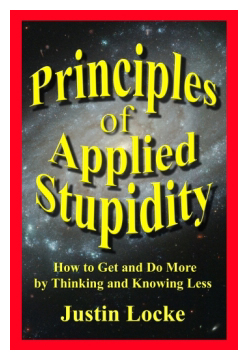As you may or may not know, I am an avid swing dancer. And there is one woman I really enjoy dancing with– in fact, everyone loves to dance with her. She is so popular it’s tough to get more than one dance a night with her, and she wins prizes at events as “best social dancer,” which, in my book, is the top prize to get.
Anyway, long story short, in my fervent little dance heart I wanted to be as popular as her, so, even though she is not a “teacher” per se, I talked her into giving me a lesson. Given just how much fun our dances were, I thought this would be a delightful chat about dance philosophy, and just having a fun hour of her sharing a few favorite “patterns” with me. She was always just so charming.
Well the lesson starts and . . uh oh. The charm was, well, not all gone, but it was subdued. Instead of a mutual dance love fest, I was calmly informed that I was doing all sorts of stuff . . . wrong.
I wanna tell ya, this was a blow to my male dance pride. I mean, she was really nice about it, but . . . she was right, and she proceeded to explain what I was doing wrong.
I won’t get into the technical details. The upshot of it was, I was not . . conscious. She had been dancing beautifully and having fun with me . . . not because of me . . . but in spite of me. I had been dancing in a state of perceptual oblivion.
What I learned from that lesson was not any specific trick or technique. What I took from it for ever after was to never assume that I know for sure what I’m doing, and to always heighten my “listening,” that is, my perceptions. “What is this follower doing? What is she about to do?” One must always keep the broad perceptual ears open, because no matter how much you listen and observe, there is always more to it just out of range. A huge part of a follower’s trust in any context is checking to see if you, the leader, are listening or not. You will never know when or how you are going to be tested as a leader in terms of “are you really listening?”
“Leader perception” is the basis of the trust between leader and follower, as the follower does not have the same level of control. When a follower senses you are not listening, they will generally leave you to your state of denial, and so the upper levels of “synergy” are forever lost. It is all too easy, once you have taken a class and gotten “certified,” to assume that you “got this,” and don’t have to think about it any more. But all too often this leads to no longer living in infinite “consciousness” mode, and into mechanical perfunctory mode.
This “dance lesson lesson” reminded me of my long gone days of professional bass playing, where not just me, but everyone in the orchestra, always kept one hypervigilant eye open for possible missteps, even though we were insanely good at what we did. And we could always immediately tell if a conductor was perceptually conscious or if they were living in a private self-congratulatory bubble of denial and escape. There was never any middle. And by the way, if it was the latter, mayhem always ensued.
It is of course possible to go too far in the other direction, into what I used to call “toxic humility.” It’s not ideal to always say that everything about you is garbage and it all needs to be fixed from zero. Part of “consciousness” is knowing when you have reached the furthest limits of human capability, as as well as what needs improving.

Humility, and just coping with the state of “I don’t know,”is kind of a big deal in a world that constantly shames “ignorance,” and since I did a post today on talentculture.com about my “Principles of Applied Stupidity” book, I thought it would be timely to share this story. Humility and consciousness are separate from any specific “technique” or codifiable action. Many people try to teach “quick and easy” steps that will get a given effect without having to go through the often difficult and ego-busting steps of getting to higher consciousness. Higher consciousness development is hard, it gets into nasty areas of past trauma, but it is well worth it, because every once in a while I get to dance with a superstar, for instance, Patty Vo (Watch what she does at 1:19, amazing)– (No that is not me dancing with her!)
And let me tell you, when I dance with someone like that, I never assume I know what I am doing and I keep on high alert. It’s not as comfortable as complacency, and dancing in mutual high consciousness mode carries a constant message of “you’re awfully good but you could always do that better,” but for all the inexactitude and uncertainty of higher consciousness, it’s the only path to enlightenment and competence.
